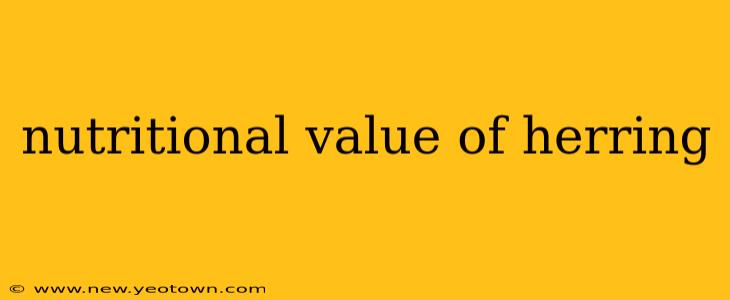Herring. The word itself might conjure up images of pungent fish markets or perhaps a slightly intimidating tinned seafood option. But beneath that sometimes-unassuming exterior lies a nutritional powerhouse, a small fish brimming with health benefits that deserve a closer look. Let's dive into the incredible nutritional value of herring and uncover why it should be a staple in your diet.
My name is Anya Petrova, and as a registered dietitian with over 15 years of experience specializing in sustainable seafood diets, I've seen firsthand the remarkable impact of incorporating nutrient-rich fish like herring into a balanced eating plan.
What are the key nutritional benefits of herring?
Herring is a nutritional superstar, packed with essential vitamins, minerals, and healthy fats. It’s a fantastic source of high-quality protein, crucial for building and repairing tissues. But the real magic lies in its rich omega-3 fatty acids, particularly EPA and DHA. These are essential fats our bodies can't produce on their own, yet they play a vital role in brain health, reducing inflammation, and supporting cardiovascular health.
Beyond omega-3s, herring is an excellent source of vitamin D, often lacking in many diets. Vitamin D is essential for calcium absorption, bone health, and immune function. It's also a good source of vitamin B12, crucial for nerve function and red blood cell production, and selenium, a powerful antioxidant that protects cells from damage.
Is herring high in cholesterol?
This is a question I get frequently. While herring does contain cholesterol, the benefits far outweigh the risks. The healthy fats in herring, particularly the omega-3s, actually help to lower LDL ("bad") cholesterol levels and raise HDL ("good") cholesterol, ultimately improving your overall cholesterol profile. The focus should be on the overall dietary pattern, not individual nutrients in isolation.
What are the different types of herring and how do they vary in nutrition?
The nutritional profile of herring can vary slightly depending on the preparation and type. For example, pickled herring will have added sodium, affecting its overall sodium content. However, the core nutritional benefits—the omega-3s, vitamins, and minerals—generally remain consistent across different preparations. Whether you enjoy it smoked, pickled, or fresh, herring remains a nutritious choice.
How many calories are in herring?
A typical serving of herring (around 3 ounces) contains approximately 150-200 calories, depending on the preparation method. This makes it a relatively low-calorie, high-protein food, perfect for those watching their weight. Remember that calorie counts can fluctuate slightly depending on factors such as the size of the fish and preparation methods.
How much herring should I eat per week?
The recommended intake of oily fish like herring is typically two servings per week. This helps ensure you're benefiting from the crucial omega-3 fatty acids and other vital nutrients. However, individual needs can vary, and it's always best to consult with a healthcare professional or registered dietitian to determine the optimal intake for your specific circumstances and health goals.
Are there any potential downsides to eating herring?
While herring offers a plethora of health benefits, it's important to be mindful of potential downsides. Some individuals might experience allergic reactions, so it's important to be aware of any personal sensitivities. Also, due to its high mercury content, pregnant and breastfeeding women should moderate their herring consumption. Always prioritize purchasing sustainably sourced herring to minimize environmental impact and reduce exposure to potential contaminants.
Herring is more than just a fish; it's a delicious and nutritious food that deserves a prominent place in a healthy diet. Its impressive nutritional profile, packed with essential vitamins, minerals, and heart-healthy fats, makes it a worthwhile addition to your weekly meal plan. Remember to choose sustainably sourced herring and enjoy it as part of a balanced, varied diet.

